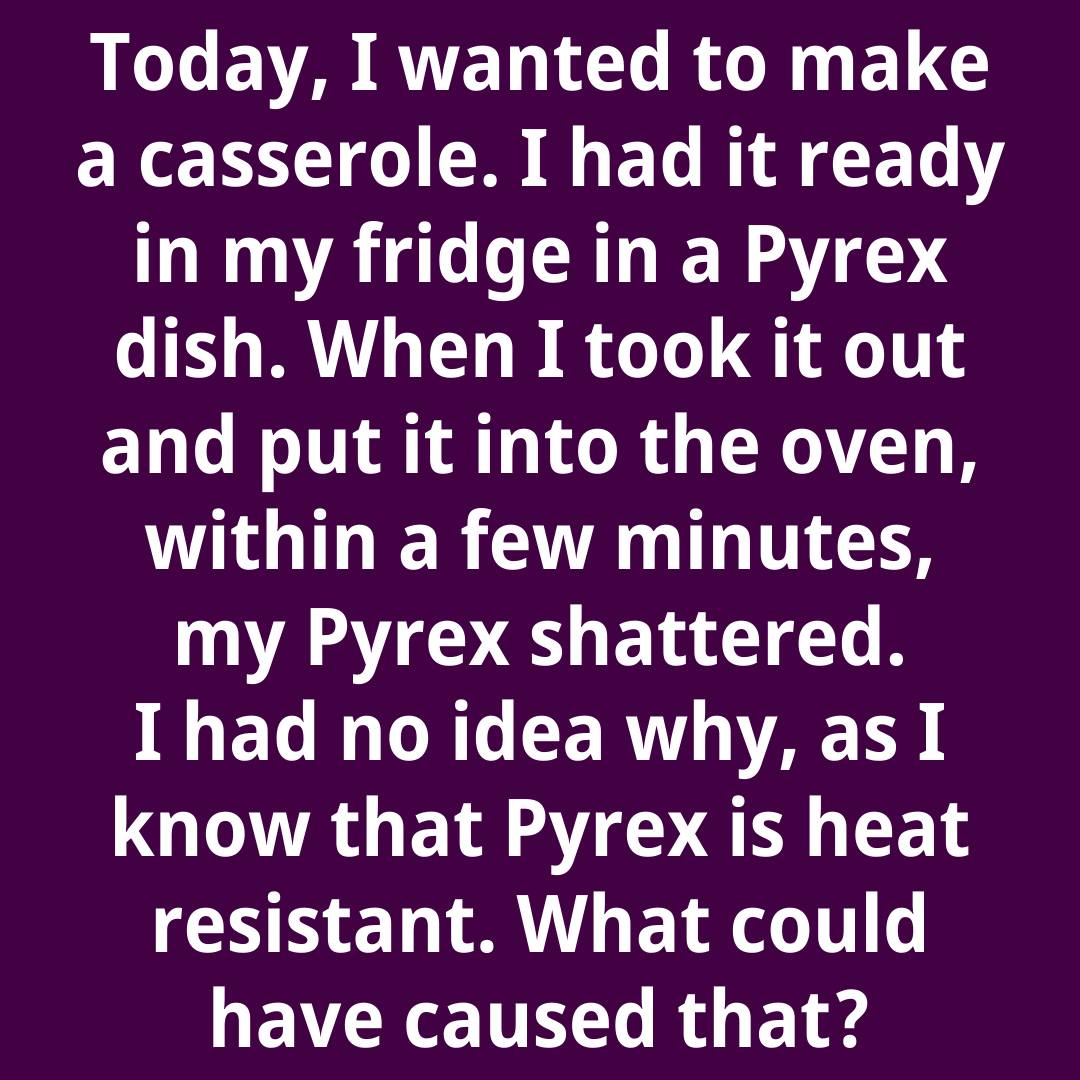Pyrex is one of those iconic kitchen staples that nearly every household owns, whether it was passed down from Grandma’s collection or picked up as part of a starter set when you first stocked your kitchen. These clear glass casserole dishes are the workhorses of cooking, doubling as mixing bowls, baking pans, storage containers, and serving dishes.

They’re sturdy, reliable, and often feel nearly indestructible, like the Humvee of cookware—heavy, dependable, and built to last. But while Pyrex is designed to withstand a lot, it’s not invincible. There are rules to follow when using Pyrex, especially in the oven, and not knowing them can lead to a dangerous and frustrating mess. The short answer is yes, Pyrex is oven-safe. That’s one of its main appeals—you can mix, bake, serve, and store food all in the same dish without transferring it and creating more dirty dishes. However, Pyrex is still glass, and glass reacts to sudden temperature changes in ways that metal or cast iron does not. The biggest risk to your Pyrex is thermal shock, which happens when a glass dish experiences a rapid change in temperature. If you take a cold Pyrex dish straight out of the fridge and place it into a preheated 425-degree oven, you’re asking for trouble.
The drastic temperature difference can cause the glass to crack or, worse, shatter completely, leaving your meal bubbling on the oven floor surrounded by shards of glass. This isn’t a gradual process—it happens instantly, turning dinner into a dangerous disaster in seconds. To avoid thermal shock, you need to let your Pyrex adjust to room temperature before exposing it to high heat. If your dish has been in the fridge, let it rest on the counter for 20 to 30 minutes before baking. It doesn’t have to get completely warm, but it shouldn’t be ice-cold when it hits the oven.
and here’s the biggest rule of all: never, ever take Pyrex from the freezer and put it directly into a hot oven. That’s an extreme temperature jump, and no amount of toughness in the glass will save it from cracking under that kind of stress. If you’ve frozen food in Pyrex, plan ahead and let it thaw fully on the counter or overnight in the refrigerator before baking. In a pinch, you can place the cold dish in an unheated oven and let both the dish and oven warm up together, reducing the risk of breakage.
@theferalmomstories Replying to @reynhanhan Read your vessel. #pyrex #pyrexia #fyp #thanksgiving #baking #bakingdish #casserole #baker #kitchentip #foodtok #vintagecookware #mixingbowl ♬ original sound – FeralMom
Vintage Pyrex, the kind with pastel colors or retro floral patterns, has a bit more resistance to thermal shock because older pieces were made from borosilicate glass, which handles temperature changes better than the tempered soda-lime glass used in most modern Pyrex dishes. But even with vintage pieces, the same safety rules apply—avoid drastic temperature swings, don’t add cold liquids to hot glass, and never go from freezer to oven in one step. These older dishes are also irreplaceable collectibles now, so they deserve extra care to keep them in good condition.
The takeaway is that Pyrex is durable and versatile, far superior to flimsy plastic containers that stain and warp, but it’s still glass. It needs to be treated with respect. Give it time to acclimate before baking, avoid exposing it to extreme temperature changes, and don’t expect it to perform like metal or cast iron, which can handle more abuse. With proper handling, Pyrex can last for decades, becoming a reliable part of your cooking routine and maybe even something you pass down to the next generation. Ignoring these rules could mean ruined meals, a shattered dish, and a dangerous cleanup job you’d rather avoid. Treat Pyrex well and it will serve you faithfully for years, proving why it remains a timeless favorite in kitchens everywhere.





